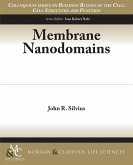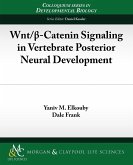Intermediate filaments (IFs), in concert with microfilaments (MFs) and microtubules (MTs), form the cytoskeleton, and each of these fibrillar networks exhibits rather unique structural and functional characteristics. Intermediate filaments were discovered in eukaryotic cells in the late 1960s, and their name comes from the fact that their diameter is intermediate between MFs and MTs. In contrast to the latter, IFs constitute a network that extends from the nuclear envelope throughout the cytoplasm, and in many cases, interact with cell surface domains involved in cell-cell and cell- matrix interactions. Several key features of their expression, assembly, structure and dynamics are highlighted in this eBook. For instance, IF proteins are encoded by several genes, which are classified into six types reflecting the tissues (cells) of origin. Moreover, IF proteins contain a conserved central ¿-helical (rod) domain flanked by N-terminal (head) and C-terminal (tail) globular domains that enables assembly of fibrous IFs exhibiting a tripartite structure. Although the rod domain is responsible for the formation of the coiled-coil framework and yields the main driving force during the IF protein assembly, the head and tail domains contribute to most of the structural heterogeneity of IF organization and undergo several types of post-translational modifications. Furthermore, the development of gene targeting methods to genetically knockout the expression of the IF genes in mice has uncovered the mechanical versus non-mechanical features of the IF networks, namely, their involvement in cell response to diverse forms of stress, growth stimulation, migration, or death insults. Finally, there is accumulating evidence revealing that the tissue and cell-type expression of IF genes reflects itself in the presence of causal or predisposition mutations responsible for numerous human tissue-specific diseases, known as IF-pathies. Table of Contents: List of Abbreviations / Introduction / IFs as a Multigene Family of Filamentous Proteins / Nuclear Lamina / IF Functional Interplay with Cell Surface Domains and Organelles / IFs and Cell Specialization / IF Relevance to Human Diseases / Conclusion / References / Author Biographies








